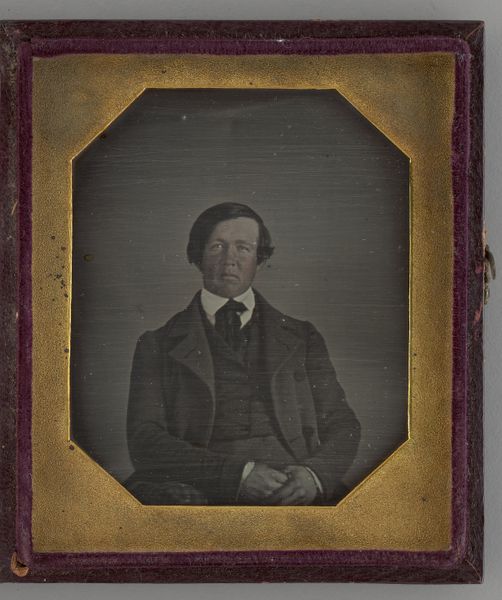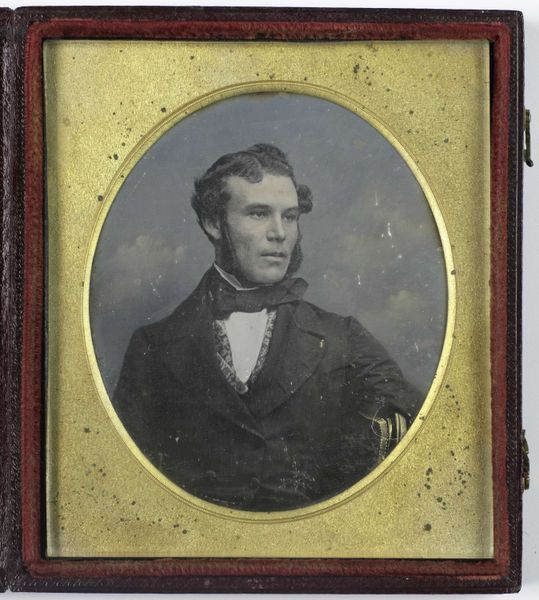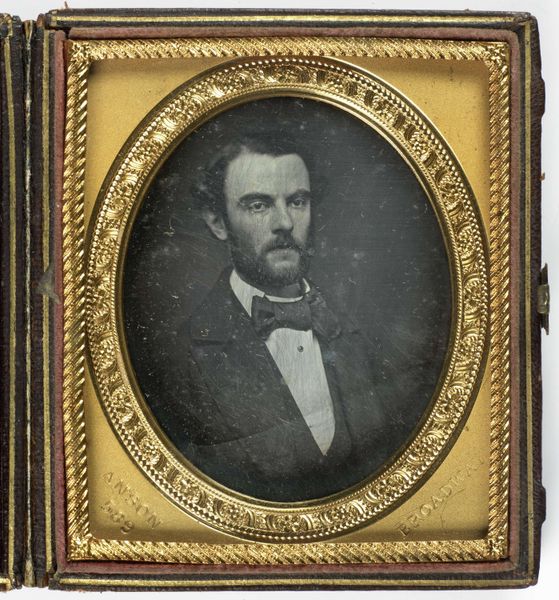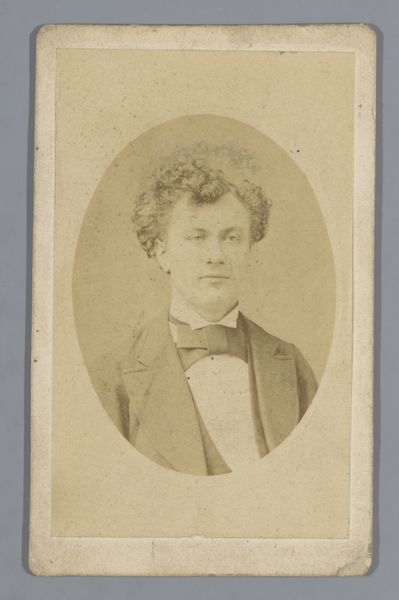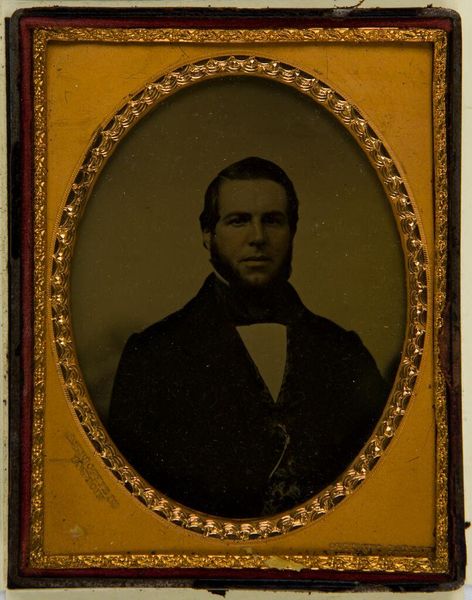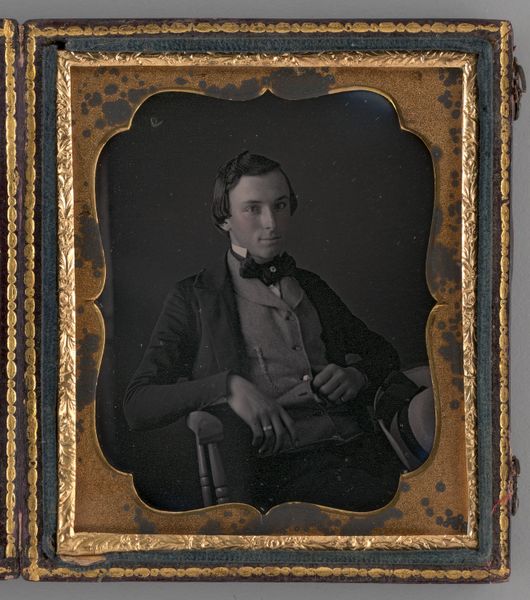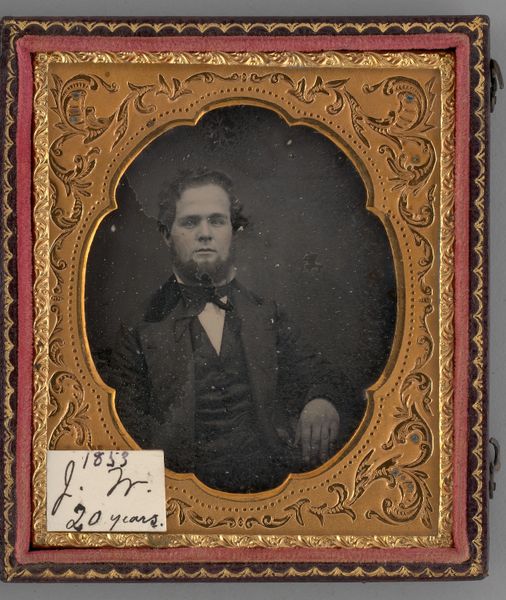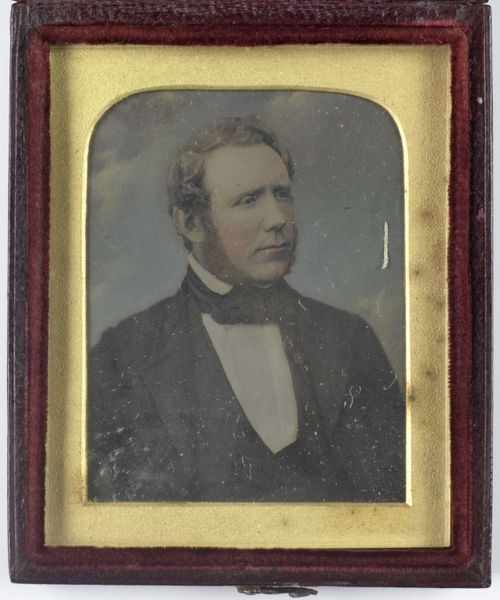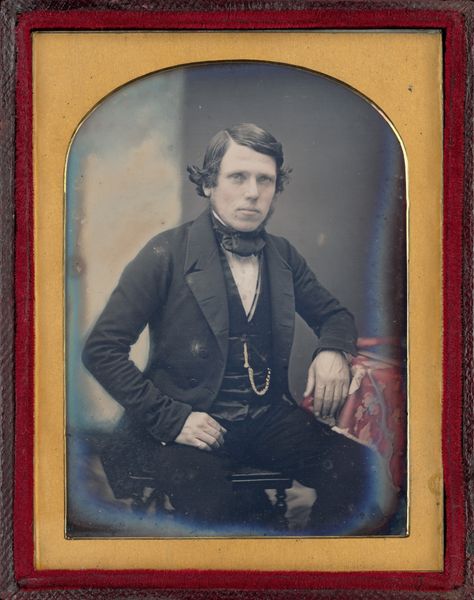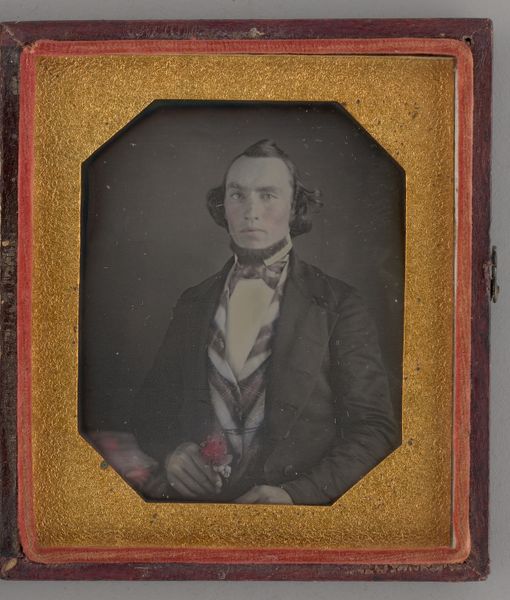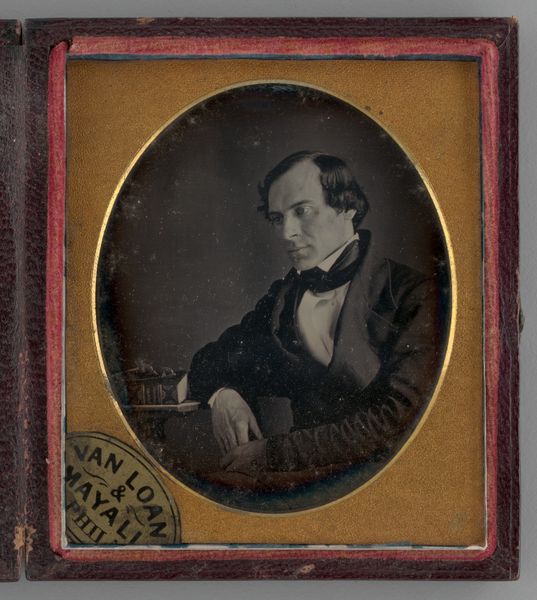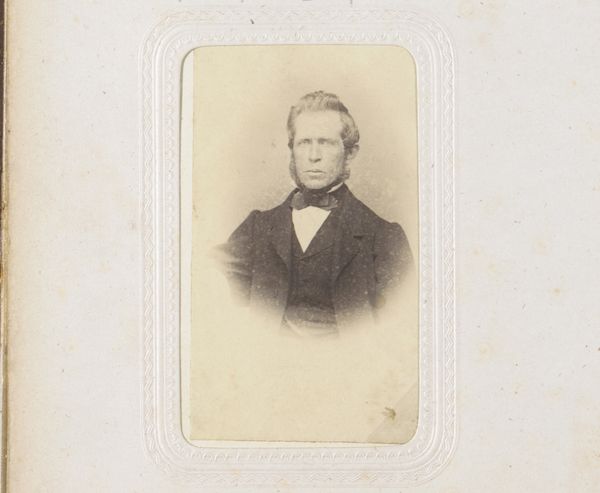
daguerreotype, photography
#
portrait
#
16_19th-century
#
sculpture
#
daguerreotype
#
photography
#
men
#
united-states
#
history-painting
#
realism
Dimensions: 8.2 × 6.9 cm (3 1/4 × 2 3/4 in., plate); 9.2 × 15.8 × 1 cm (open case); 9.2 × 7.9 × 1.7 cm (case)
Copyright: Public Domain
This is an anonymous portrait of a man, made with the daguerreotype process. During the 1840s and 50s, photography’s popularity soared. The new medium was lauded as a democratic art form, making portraiture newly accessible to the middle classes in the United States and Europe. This small, cased image, typical of the era, reflects that trend. The sitter's formal attire suggests a man of some social standing, keen to participate in the latest cultural phenomenon. But while photography democratized image-making, the cost of sitting for a portrait still placed it beyond the reach of many working-class people. Like all historical sources, this image is most revealing when studied in context. Examination of census records, business directories, and other period documents could help us identify the sitter and uncover his place within the social landscape of his time. As a historian, I would be interested to discover who this man was, and what it meant for him to have his portrait taken.
Comments
No comments
Be the first to comment and join the conversation on the ultimate creative platform.

